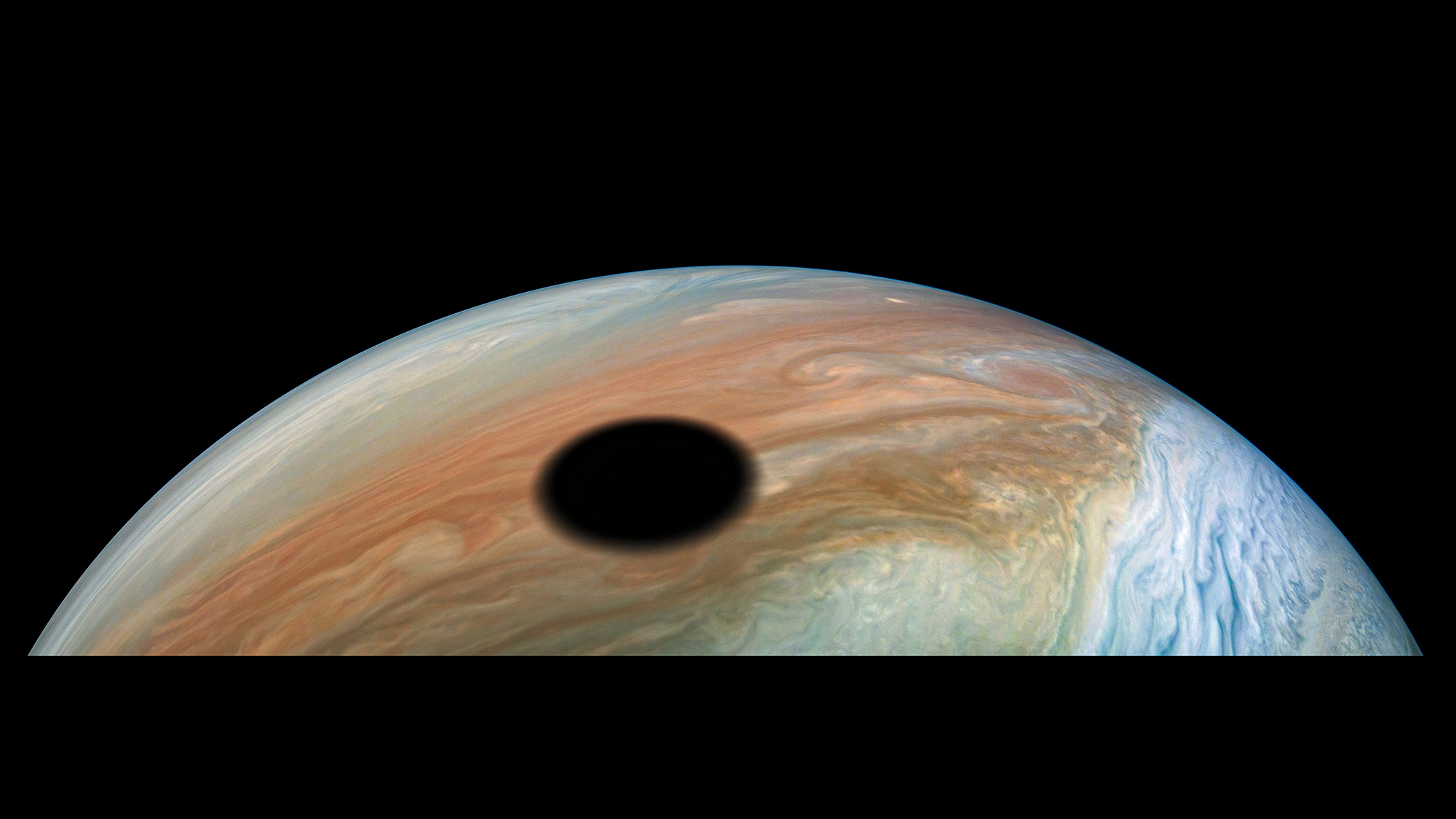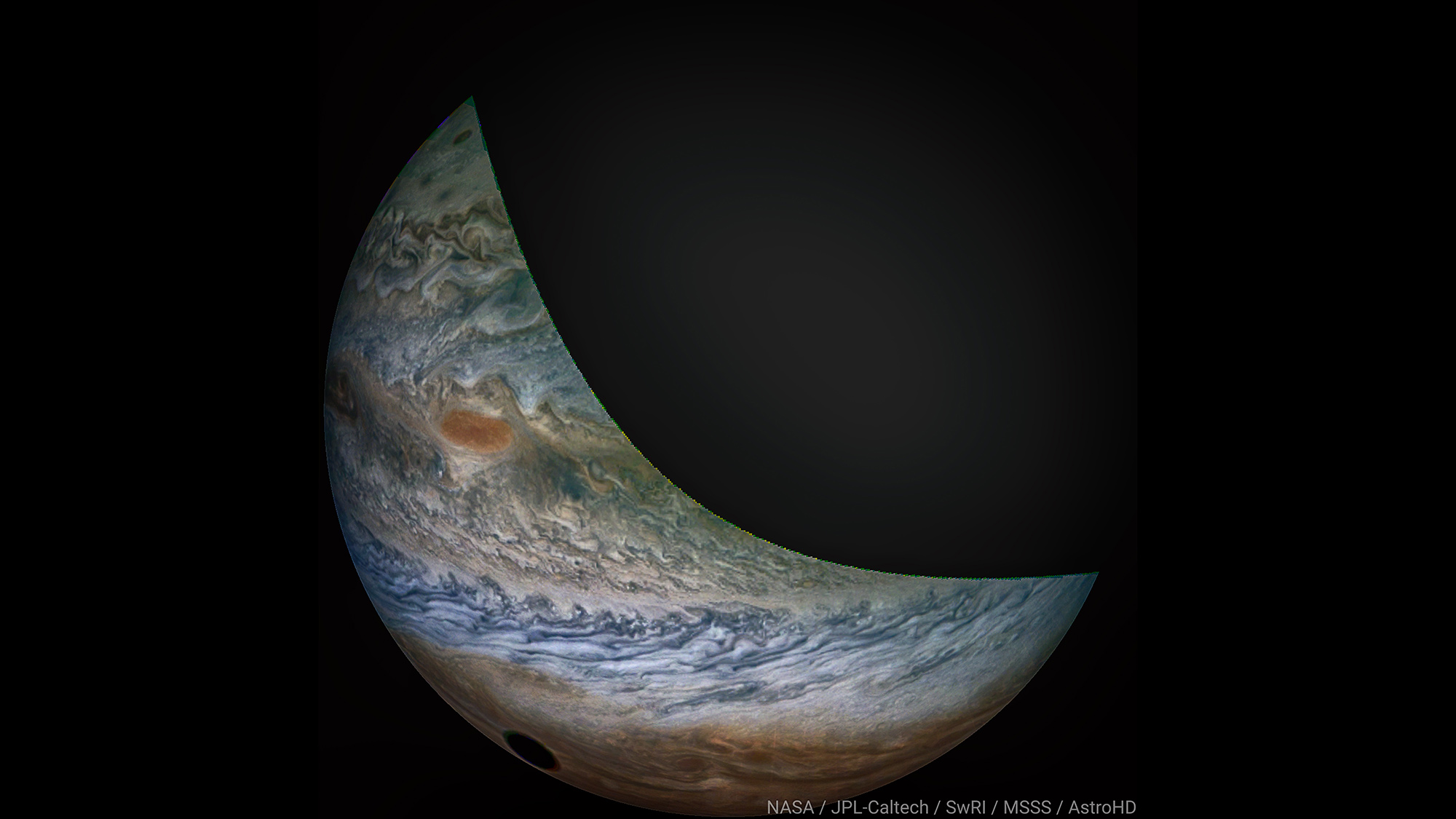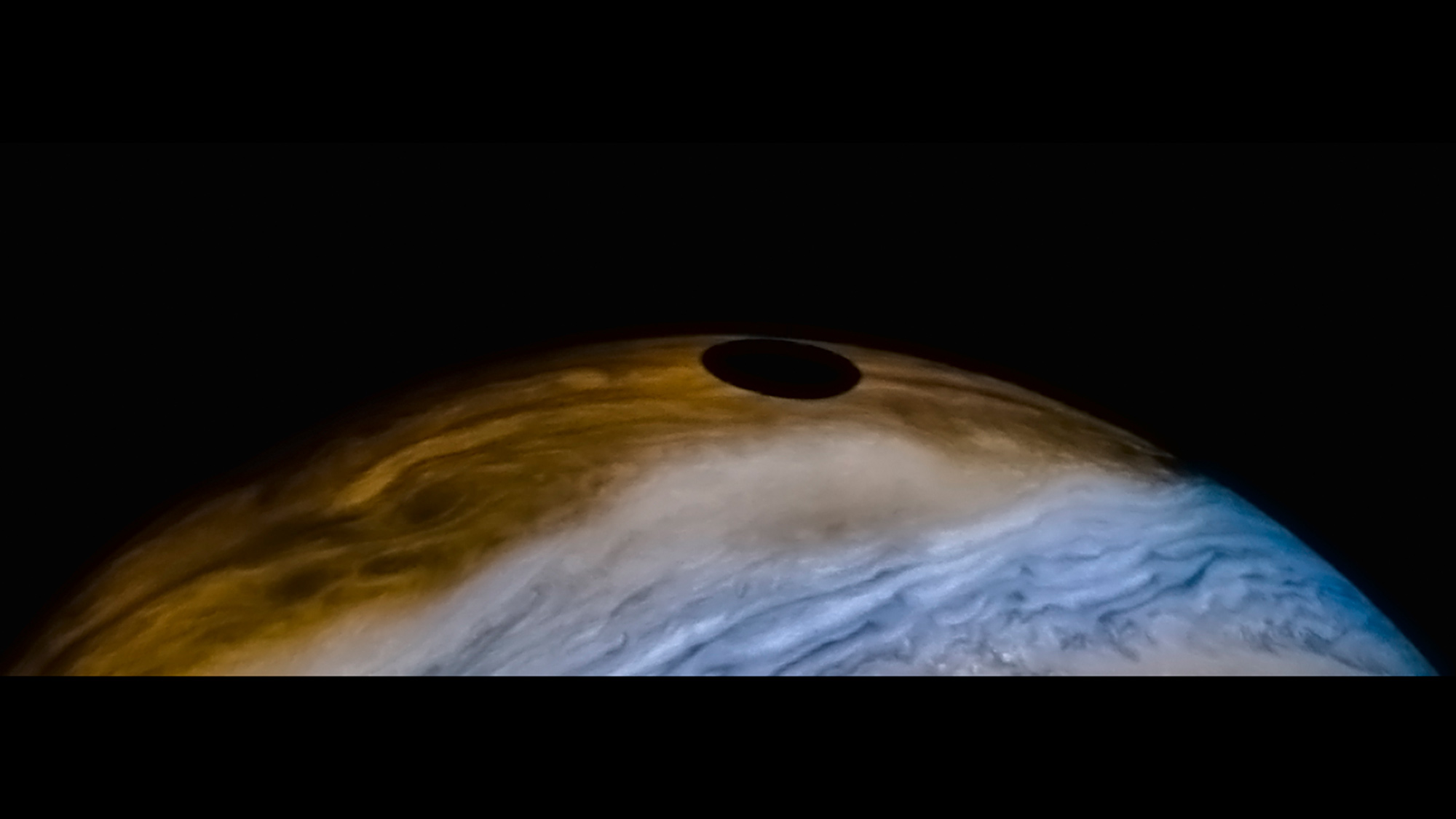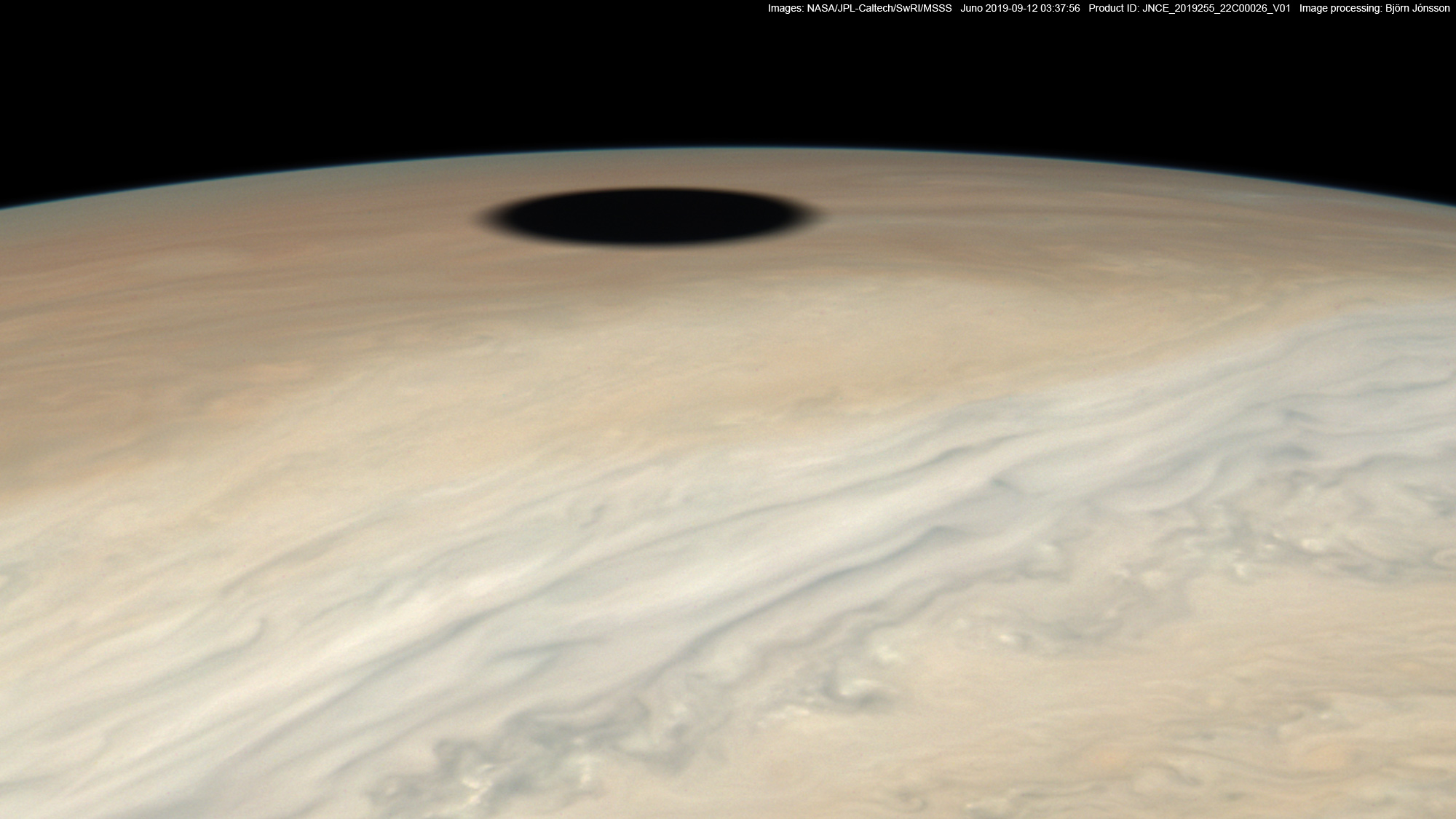NASA's Juno Mission Checks Out Epic Io Eclipse on Jupiter
Don't panic, this isn't a massive hole on Jupiter.
All is well on our largest neighbor; NASA's Juno spacecraft just managed to spot the shadow of Jupiter's moon, Io, passing over its marbled clouds.
The Juno mission made its 22nd close skim over the gas giant around Sept. 11, when the celestial geometry was just right for Io to slip between the sun and the planet during one of its rapid-fire circuits of Jupiter. (The moon takes just 1.77 days to orbit the planet.)
Related: The Biggest Volcano on Jupiter's Moon Io Is Super Active. But Does It Run Like Clockwork?
Video: Jupiter's Moon Io Casts Large Shadow on Gas Giant Planet
Io is the most volcanic world in our solar system, thanks to heat generated by the close tug of Jupiter's massive gravity. Of Jupiter's four large moons, Io orbits closest to the planet, allowing it to cast a vast shadow on the gas giant.
NASA's Juno spacecraft has been orbiting Jupiter for more than three years, making a close approach every 53 days. Scientifically, the spacecraft's priorities are a host of instruments that are designed to study the planet's atmosphere and interior.




But also onboard Juno is a camera; All of the raw images that camera captures are uploaded online, where volunteer image processors get to work turning the raw files into something beautiful, informative, or both.
Breaking space news, the latest updates on rocket launches, skywatching events and more!
That means that while we wait for scientists to analyze the rest of Juno's data, we can enjoy stunning images of Jupiter, like these eclipse shots. The images mimic photographs taken from space of eclipses here on Earth, when the moon's shadow crosses the planet.
- In Photos: Juno's Amazing Views of Jupiter
- Get Lost in Jupiter's Marbled Clouds with This Awesome NASA Photo
- JunoCam Images Are Where Science Meets Art and NASA Meets the Public
Email Meghan Bartels at mbartels@space.com or follow her @meghanbartels. Follow us on Twitter @Spacedotcom and on Facebook.

Meghan is a senior writer at Space.com and has more than five years' experience as a science journalist based in New York City. She joined Space.com in July 2018, with previous writing published in outlets including Newsweek and Audubon. Meghan earned an MA in science journalism from New York University and a BA in classics from Georgetown University, and in her free time she enjoys reading and visiting museums. Follow her on Twitter at @meghanbartels.
